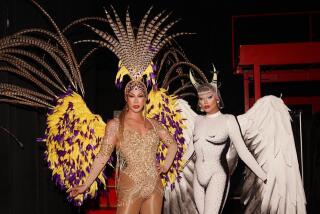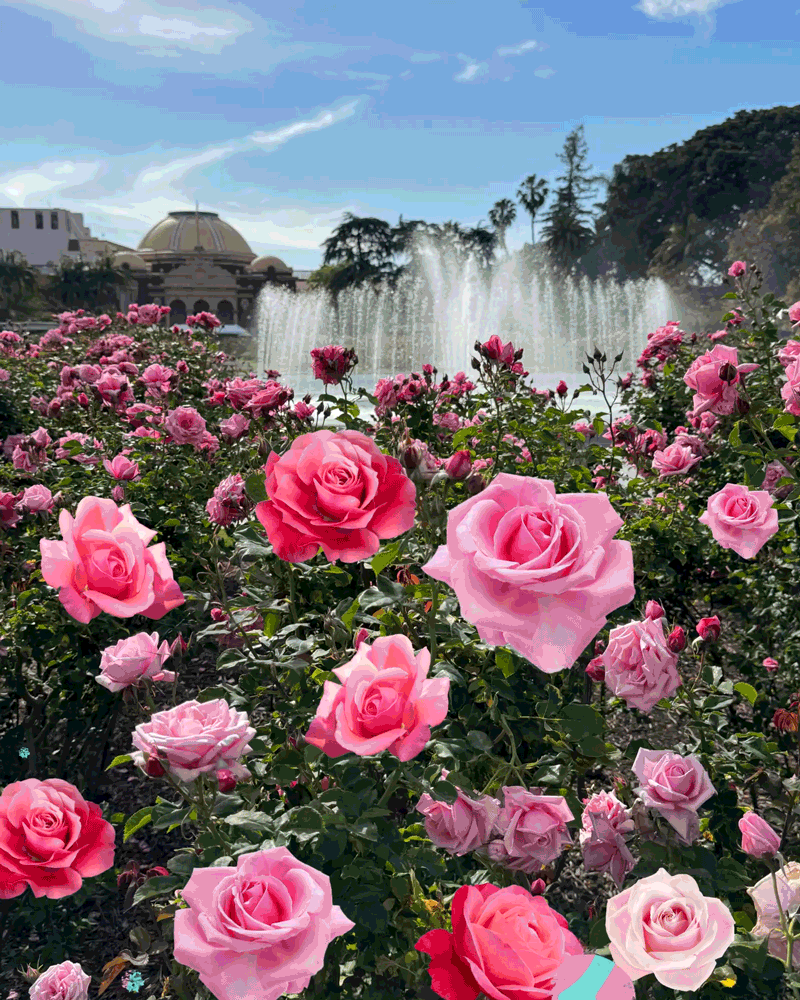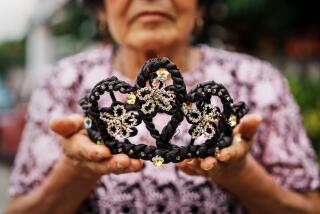Crowning Glory : Despite Changes Over the Years, Rose Queens Find Common Ground
Ah, how times have changed.
When Holly Halsted Balthis was chosen queen of the 1930 Tournament of Roses, she was given $10 to buy eggshell satin to make her own dress. That’s it. No frills. She didn’t even have a crown.
Sixty-four years later, the tournament royalty get wardrobes that would make Princess Di jealous. This year’s queen, Aliya Haque, was decked out Friday in official outfit G--an ensemble that includes a scarlet jacket, a black and white turtleneck and a very short black miniskirt.
“I say, ‘Good for them,’ ” said Balthis, who at 86 is the oldest living Rose queen. “I think it’s wonderful.”
They come from different economic backgrounds, different cultures, different generations--with the simple common denominator of having served as Pasadena’s reigning royalty. They like to quip that they get along better than England’s Royal Family. But then again, they only get together once a year.
On Friday, 27 Rose queens, whose reigns span six decades, gathered for their annual brunch.
“This is like coming home,” said Liana Yamasaki, 20, the 1993 queen. “The older members are like grandmothers and mothers. They are my guiding figures. Really, we are like one big family. It is something I know I will be a part of for life.”
There have been more than 80 Rose queens selected since 1905. The surviving members bring with them an oral history that spans a good part of the century.
Margaret Huntley Main, the 1940 queen, and her family lost everything they had in the Depression. They were forced to move out of their large Pasadena home on East Orange Grove Place to a nearby “shack.” “We were very, very poor,” she said. “I can still remember my mom crying.”
Main, 73, said she probably would not have even tried out for queen except that at the time, trying out for the court was a requirement of girls attending Pasadena schools.
Although tournament officials gave her a gown, she wore hand-me-down shoes. “My father had to cut the heels off because they were too high,” she said.
Like many of the queens during war years, she received dozens of fan letters from soldiers, including a French regiment, all of whom later died in World War II as the Germans crossed the Maginot Line.
Barbara Hewitt Laughray, the 1967 queen, still treasures the 300 letters she received from Vietnam servicemen.
“They told me I was a pinup girl in Vietnam,” said Laughray, 47, who is now working as a minister in Calabasas. “I thought that was hysterical. I didn’t think the Rose queen fit the image of a pinup.
“But the fan mail showed me the vastness of what this is all about. I was always so proud of this particular title. I don’t think it was just a beauty title. It was far beyond that.”
But it is a title Linda Strother McKnight, 45, was not always sure she wanted. She was selected queen in 1968, one of the tournament’s more turbulent years.
“It was a socially and politically controversial time,” McKnight said. “The NAACP was picketing. The parade wasn’t a big to-do back then.”
She said that when she went to UC Berkeley the following year, she only told “people that I could absolutely trust” that she was a Rose queen. “I was afraid they would make me stand in front of my social science class and throw things at me,” she said.
It was not until the 1980s that her perspective started to change.
“It has turned out to be a wonderful group of women,” McKnight said. “Being part of this is a privilege. I feel that way in spite of the ‘60s.”
* ROSE PARADE MAP: B2.


